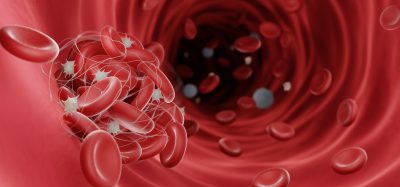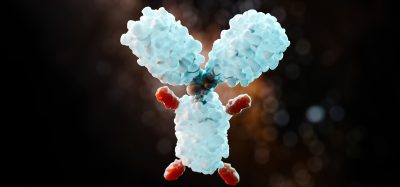Scientists discover how 5-HT1A receptor shapes brain signalling
Posted: 7 August 2025 | Drug Target Review | No comments yet
Researchers at Mount Sinai have mapped how the 5-HT1A serotonin receptor controls brain signalling – finding a hidden lipid ‘co-pilot’ that could lead to the development of more targeted antidepressants.


In a new discovery, researchers at the Icahn School of Medicine at Mount Sinai have developed new insights into how a critical brain receptor works at the molecular level. This could eventually lead to the development of more targeted antidepressant medications.
The study, published in Science Advances, focuses on the 5-HT1A serotonin receptor – a major component in regulating mood and a common target for traditional antidepressants. Despite its clinical importance, this receptor has remained poorly understood, with many of its molecular and pharmacological properties hugely understudied – until now.
A molecular ‘control panel’ for brain function
“This receptor is like a control panel that helps manage how brain cells respond to serotonin, a key chemical involved in mood, emotion and cognition,” says senior author Dr Daniel Wacker, Assistant Professor of Pharmacological Sciences and Neuroscience, at the Icahn School of Medicine at Mount Sinai. “Our findings shed light on how that control panel operates – what switches it flips, how it fine-tunes signals and where its limits lie. This deeper understanding could help us design better therapies for mental health conditions like depression, anxiety and schizophrenia.”
Automation now plays a central role in discovery. From self-driving laboratories to real-time bioprocessing
This report explores how data-driven systems improve reproducibility, speed decisions and make scale achievable across research and development.
Inside the report:
- Advance discovery through miniaturised, high-throughput and animal-free systems
- Integrate AI, robotics and analytics to speed decision-making
- Streamline cell therapy and bioprocess QC for scale and compliance
- And more!
This report unlocks perspectives that show how automation is changing the scale and quality of discovery. The result is faster insight, stronger data and better science – access your free copy today
Using new lab techniques, the research team found that the 5-HT1A receptor is inherently wired to favour certain cellular signalling pathways over others – regardless of the drug used to target it. However, drugs can still influence the strength with which those pathways are activated.
Cryo-EM sheds light on key interactions
To explore these mechanisms in more detail, the researchers combined experiments in lab-grown cells with high-resolution cryo-electron microscopy (cryo-EM) – an imaging technology that reveals molecular structures at near-atomic resolution. Their work focused on how various drugs activate the 5-HT1A receptor and how the receptor interacts with internal signalling proteins known as G proteins.
As scientists better understand which pathways are activated, they can more precisely design drugs that treat specific symptoms or conditions without unwanted side effects.
Different signalling pathways controlled by the 5-HT1A receptor are linked to different aspects of mood, perception and pain. As scientists better understand which pathways are activated, they can more precisely design drugs that treat specific symptoms or conditions without unwanted side effects.
“Our work provides a molecular map of how different drugs ‘push buttons’ on this receptor – activating or silencing specific pathways that influence brain function,” says study first author Dr Audrey L Warren, a former student in Dr Wacker’s lab who is now a postdoctoral researcher at Columbia University. “By understanding exactly how these drugs interact with the receptor, we can start to predict which approaches might lead to more effective or targeted treatments and which ones are unlikely to work. It’s a step toward designing next-generation therapies with greater precision and fewer side effects.”
A hidden ‘co-pilot’ molecule
In a surprising finding, the researchers discovered that a phospholipid – a type of fat molecule found in cell membranes – plays a major role in steering the receptor’s activity, almost like a hidden co-pilot. This is the first time a role like this has been observed among the more than 700 known receptors of this type in the human body.
While current antidepressants often take weeks to work, scientists hope this new understanding of 5-HT1A signalling could help explain those delays and lead to faster-acting alternatives.
“This receptor may help explain why standard antidepressants take long to work,” says Dr Wacker. “By understanding how it functions at a molecular level, we have a clearer path to designing faster, more effective treatments, not just for depression, but also for conditions like psychosis and chronic pain. It’s a key piece of the puzzle.”
Looking ahead: from the lab to clinic
Next, the researchers plan to dig deeper into the role of the phospholipid ‘co-factor’ and to test how their lab-based findings hold up in more complex experiments. They are also working on turning these discoveries into real-world compounds that could become future psychiatric medications, building on their earlier success with drug candidates derived from psychedelics.
This breakthrough not only broadens scientific understanding of brain signalling but could also enable the design of mental health treatments that are faster, more precise and have fewer side effects.
Related topics
Central Nervous System (CNS), Disease Research, Drug Discovery, Drug Discovery Processes, Drug Targets, GPCRs, Neurosciences, Therapeutics, Translational Science
Related conditions
Depression
Related organisations
the Icahn School of Medicine at Mount Sinai








